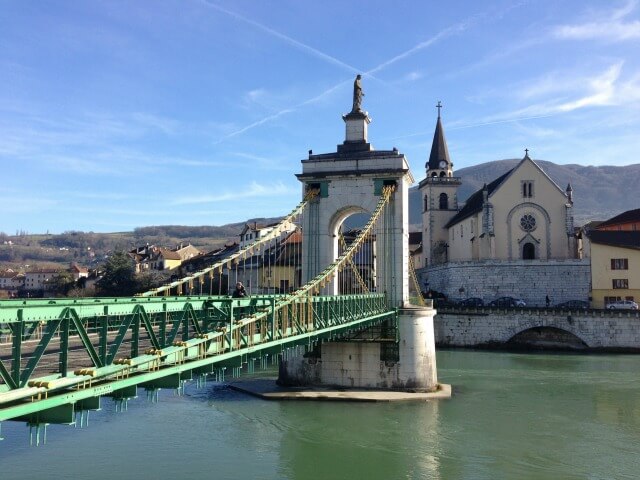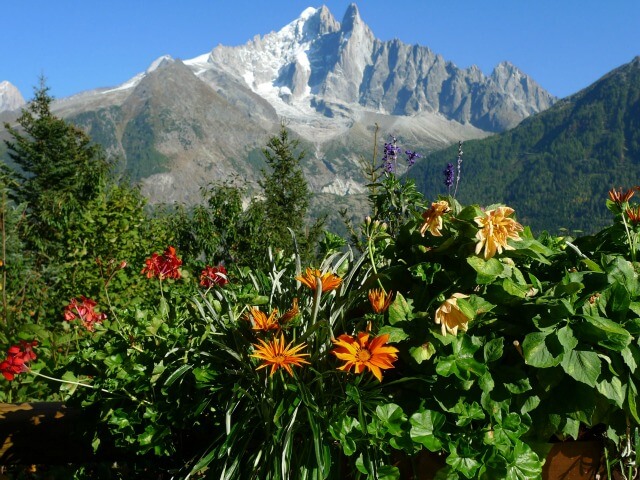Travel on foot – it’s called different things in different countries: walking, trekking, tramping, rambling, hiking, bushwalking, bushbashing…
It’s the ultimate slow travel, taking your time to get from one place to the next, as close to the ground and to people as you possibly can.
Travel on foot more than just sport: walking is about proximity, intensity and experience. Rather than seeing as much as possible, it’s about going as deeply as possible. I’ve done short hikes and treks but someday I’ll walk all the way to a destination. I happen to live right on the Camino de Santiago, the bit that starts in Geneva and ends in… Santiago.
HOW TO GO FOR A WALK
Yes, of course, one foot in front of the other. That’s how I used to walk until I learned to WALK. To get the most of the experience takes a bit more than feet:
- Look at the details around you. Can you remember what you just walked by? What tree that was? Whether the ground was pebbly or rocky? What the streets are called?
- Use your senses as you walk. Can you smell the flowers, the asphalt, the fumes? Not every walk is going to be lovely. Can you hear birds in the trees or branches swaying in the wind?
- What is the weather like? Are you hot, cold, blowing in the wind?
- If you’re not in your own country, are there signs? What do they say? Are the shops different from those you know? How are people dressed?
- Can you tell anything about their culture from the way they walk with someone? Or their hand gestures? The volume of their voice or the amount of personal space they leave when they’re talking to someone? Are the church bells in the background or a muezzin? So people smile and greet one another or do they ignore them and walk by?
- Can you stop in a café and listen to conversations? Do you understand them? What are they about? Are most people in couples, in groups, alone? Are they writing, or reading, or simply gazing at other people?
- What about your body? Are you feeling unusual muscles begin to get grumpy? Are you out of breath or breathing more deeply than usual?
- Are you on a short walk or long hike, and how could you shorten or lengthen it if you wanted to?
I could go on… the point is that travel on foot is anything but just walking. Walking is involved but almost peripherally. To me, it’s about discovering a place the way it lives.
ARE THERE ANY ADVANTAGES TO THIS… WALKING THING?
Yes, of course, or why bother?
- walking is ideal if you have little time – think city walking tour or hike over a mountain but it can be as short or as long as you wish
- it’s sustainable and environmentally friendly – it’s hard to pollute when you’re walking (especially if you pick up after yourself)
- it keeps you fit, de-stressed and serene
- it allows you to soak up the culture – you can experience a place with all your senses, not just see it
- it puts you in touch with nature
- it allows you to meet local people along the way and see what they see
- it brings you close to the tastes, smells and sounds of your destination (see above)
- it lets you stop wherever you want and progress at your own pace
- it’s free!
IF YOU’RE GOING BEYOND THE CITY
Here are a few basic rules to help you stay safe when you travel on foot, especially if there are no crowds around:
- always wear something bright enough to be seen
- let someone know where you’re going, and when you expect to arrive
- if you’re heading somewhere isolated, try to team up with other hikers (why not look for a travel companion?)
- if you’re going beyond a single city, check online for updates (I like to check travel forums) – you don’t want to hike to another city in the middle of a flood
- depending on how far you’re going, carry a good map/GPS/personal locator beacon and any phone apps liable to help you find your way
- bring along plenty of water and food – and possibly a walking stick to help you walk and to ward off snakes and wild dogs (just in case) or slippery autumn leaves.
While going on foot from one place to the next has plenty going for it, there are some downsides… especially if you’re on a longer walk or a hike.
- you’ll see less than someone whizzing by on motorized transport – you can only walk so fast and so far, after all
- this kind of travel requires more time so you’ll have to be circumspect about your itinerary if you don’t have much travel time
- you may spend a lot of time dirty, sweaty and tired, and there may be no shower in sight
- it can be physically demanding so your health and fitness are factors
- your hiking equipment will wear out faster
- in some places distances can be huge and walking nearly impossible as a result
- it can be dangerous, in countries with conflict, disaster, extreme poverty or a high crime rate.
Despite these constraints, travel on foot remains a viable alternative. I’d love to do more of it – the best I’ve managed so far is to walk over a mountain from one town in Central America to another, and a trek across a mountain in northern Uganda. Both are still memorable, years later.
— Originally published on 31 July 2011


